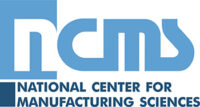Army Digital Transformation Challenge
2024
2024 Digital Transformation Challenge
In partnership with the United States Army DEVCOM Ground Vehicle Systems Center (GVSC), NCMS is pleased to announce the Army Digital Transformation Challenge (DTC). Eight finalists will present their technologies directly to GVSC leaders in a virtual presentation. NCMS will award each winner with $50,000 of in-kind support and $50,000 in project funding, applicable to a future DOD demonstration project.
NCMS is excited to announce the two winners of the 2024 Army Digital Transformation Challenge! In partnership with the United States Army DEVCOM Ground Vehicle Systems Center (GVSC), this competition aimed to highlight innovative and transformative technologies, techniques or capabilities that enable the acceleration of digital transformation across the US Army.
A total of 64 entries were submitted and carefully reviewed by the judges, to determine the top technologies that will have the greatest potential to make the US Army more digitally agile, effective, efficient, affordable, and scalable. Last week, the eight finalists presented their solutions to a panel of Army subject matter experts through a private virtual event on November 15. After careful consideration, the judges selected their two winners. The winners are:
IRONPIPE with RAG Capabilities: Revolutionizing Army Digital Transformation with IoT and Generative AI, by Aptima, Inc.
- The IRONPIPE platform, developed by Aptima, is an IoT-based, cloud-integrated system designed to address digital transformation challenges in distributed operational environments. Originally developed for the Department of Navy, IRONPIPE provides real-time situational awareness by consolidating data from environmental, human, and machine sensors into a unified Common Operating Picture (COP). Building on this foundation, its latest innovation—Retrieval Augmented Generation (RAG)—introduces generative AI capabilities to the IRONPIPE platform. It allows users to automatically generate actionable reports on-demand based on real-time data collected from IRONPIPE sensors. This eliminates the need for manual data analysis and report generation, providing critical insights on personnel, equipment, and environmental conditions.
SBE Vision Digital Engineering Ecosystem, by SBE Vision.
- SBE Vision has developed an enterprise-class interoperability solution, the SBE Digital Thread Platform. Engineered to manage large-scale data through advanced cloud-based technology and a distributed architecture, this platform enables seamless data integration across a variety of engineering applications. A defining feature of the SBE Platform is its cloud-agnostic deployment capability, which allows it to operate in an on-premise, cloud, or hybrid environments. In addition to this flexibility, the platform’s innovative hub-and-spoke model enables the traceability and auditability of data across the digital engineering ecosystem (DEE). As the needs of the DEE evolve, and additional tools are integrated, data is transformed between tools without requiring constant updates to individual connections.
The competition was open to innovative and transformative technologies, techniques or capabilities that enable the acceleration of digital transformation across the US Army. These could include novel technologies, resourcing strategies, business processes, production processes, and any other transformative capability that has the potential to make the US Army more digitally agile, effective, efficient, affordable, and scalable. The review and selection process provides great exposure as all submissions will be published online, and the top eight innovations and two final winners will be determined by senior Army GVSC leaders. Eight finalists will present their solutions to a panel of Army subject matter experts in a virtual event in November. The winning technology will be selected based on these presentations.
The online submission process involves a 300-500-word abstract, a graphic depicting the capability, and an optional demonstration video no longer than 3 minutes. Submissions are encouraged from the government, academia, and industry. The submission period is now closed.
Issues to Consider
Some of the Army’s digital transformation challenges involve solving specific issues. Please consider how your capability could answer one or more of the following questions:
- How do your digital enterprise (DE) tools plan to incorporate security to protect Army specific details?
- Are the Army’s current security protocols and requirements too strict or not strict enough when it is known our US technology and information about our systems and procedures are actively sought?
- Should data and tools, with the right amount of security, be managed by the DOD, Army, or Industry? What is best solution to meet Army goals?
- Should DE tools be hosted in a single location (cloud) or in a variety of clouds? Is there a best strategy to interlink tools in different clouds?
- How can the Army ensure open, interchangeable tool selection and integration? The Army does not want to vendor lock into one tool and would like flexibility to change between engineering tools while maintaining an easy, and secure, connection to all tools.
- Is there a best format to receive CAD data to allow for all tools, and users, to allow the best information exchange between industry, academia, and Gov, and vice versa?
- Is there a best format for Advanced Manufacturable Parts (3D printing) that can be universally accepted by any type of printing machine?
- What is the number one barrier to DE adoption in a DOD workplace, and what are your solutions to this barrier?
Submissions for the Digital Transformation Challenge included an abstract (300-500 words, 3000 characters maximum), graphic of capability, and optional short demonstration video. It was focused on digital transformation initiatives and how digital transformation is enabling the Army to field and sustain a fighting force more effectively and efficiently. Abstracts contained the following to be eligible for consideration:
Abstract Requirements (Must contain the following to be eligible for consideration)
- Problem Statement
- Description of the Transformation Solution
- Benefits to the Army
- Expected Challenges
- Technical Maturity/ Demonstration Results
Graphic Requirements
- Graphic of the capability being submitted (Photograph, drawing, screen captures, etc.)
- File type must be jpg or png
- File size must be > or = to 300 DPI and no larger than 10 MB
Video Requirements
- The purpose of this video is to provide a brief demonstration of the technology. It is NOT a commercial describing your organization or company.
- Video should be concise, under 3 minutes in length.
- Video doesn’t need to be professionally produced; it can be filmed using a smartphone.
- It’s important to emphasize that this is not a sales presentation; we’re seeking informative content about the technology.
- Videos should be submitted as a URL.
- Individuals can drop their mp4 file into Box.com, Dropbox, Google Drive, Vimeo, or Youtube. After uploading the video, users will receive a URL, which they can submit with their entry.
All DTC finalists will have opportunity to adjust submitted videos for the finalists’ presentations.
Note: All submissions will be published online on ncms.org. By submitting, you are authorizing release to the public and that the submission has been vetted for public viewing and does not contain proprietary or confidential information.
Submissions were judged based on the following criteria:
- Digital engineering relevance/impact: How much does it impact digital engineering? Does it improve the efficiency and/or effectiveness of current engineering practices (e.g. cost, safety, cycle time, necessary manpower, readiness, etc.)?
- Originality/contribution to the state-of-the-art: How original or innovative is it?
- Avoidance of commercialism: Does it describe a technology and how it will improve digital transformation or does it attempt to market the organization?
- Technical maturity: How mature or ready is the technology? Has it been prototyped or successfully demonstrated?
- Cross-service applicability: Is it potentially applicable to all service branches of the military and the Defense Logistics Agency (DLA)?
- Feasibility/practicality: How viable would it be to transition the technology for use by the Department of Defense (DoD)? Considerations include Army digital engineering needs, needs of specific DoD programs, implementation, the readiness level of the technology, and the strength/validity of test or simulation data supporting performance claims.




